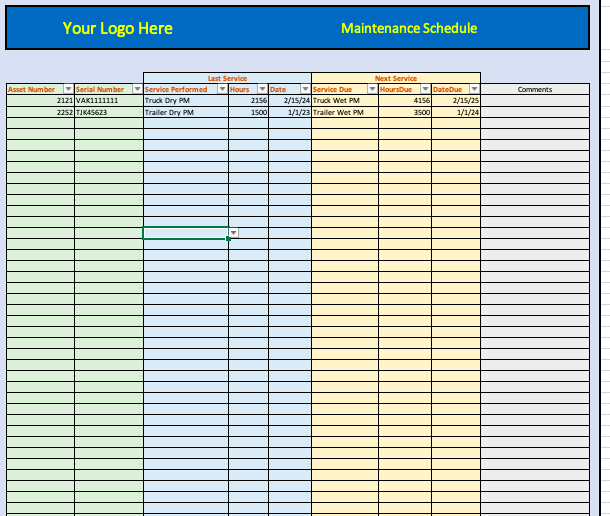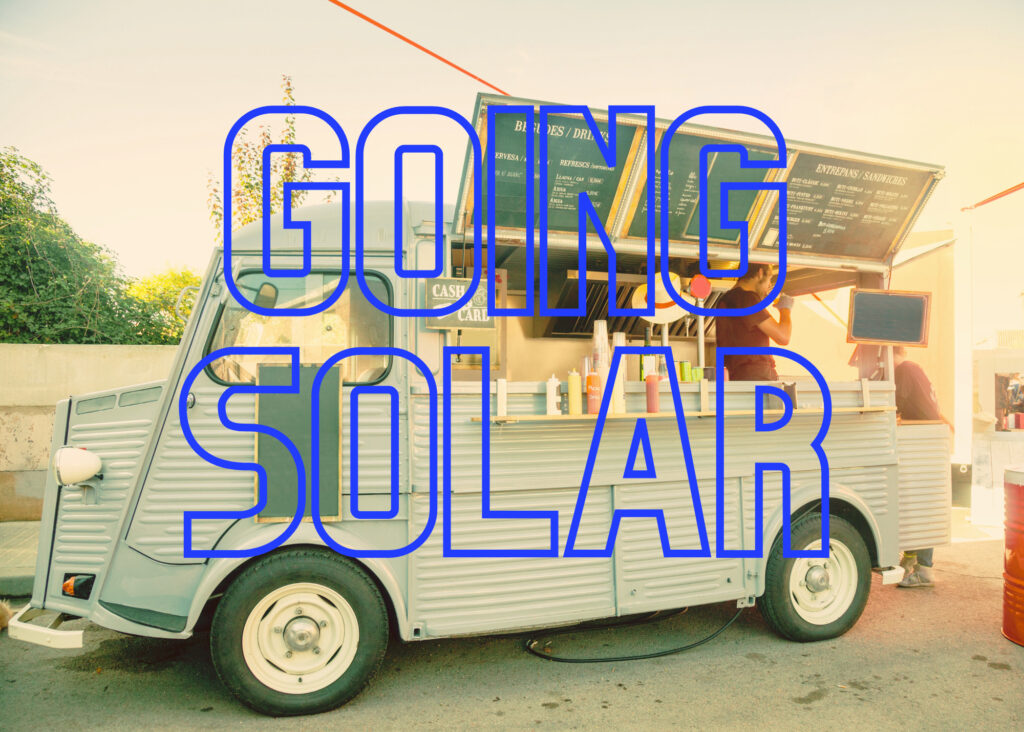 Solar panel systems have come a long way over the past 20 years. A quick drive around any city will produce many examples of solar panels in action. While solar panels have gained popularity, the types of application and how they are used have also grown. If you own or operate a food truck, you may be considering whether a solar panel setup would be right for you.
Solar panel systems have come a long way over the past 20 years. A quick drive around any city will produce many examples of solar panels in action. While solar panels have gained popularity, the types of application and how they are used have also grown. If you own or operate a food truck, you may be considering whether a solar panel setup would be right for you.
What Is The Best Power Source for a Food Truck?
Many food trucks operate a portable generator to power their equipment when electricity is not available. Generators are relatively cheap, easily sourced, and reliable when maintained properly. Generators can also be noisy, require maintenance and fuel, and produce emissions. While powering food trucks with generators is a popular solution, many operators have considered whether solar power would be a better alternative.
In comparison to generators, solar panels offer a great alternative to generating power. . They provide clean energy from the sun, are quiet and require very little maintenance. There are no harmful emissions to worry about. What do you need to know if you are considering powering a food truck with a solar panel system?
Powering Your Food Truck with Solar Panels
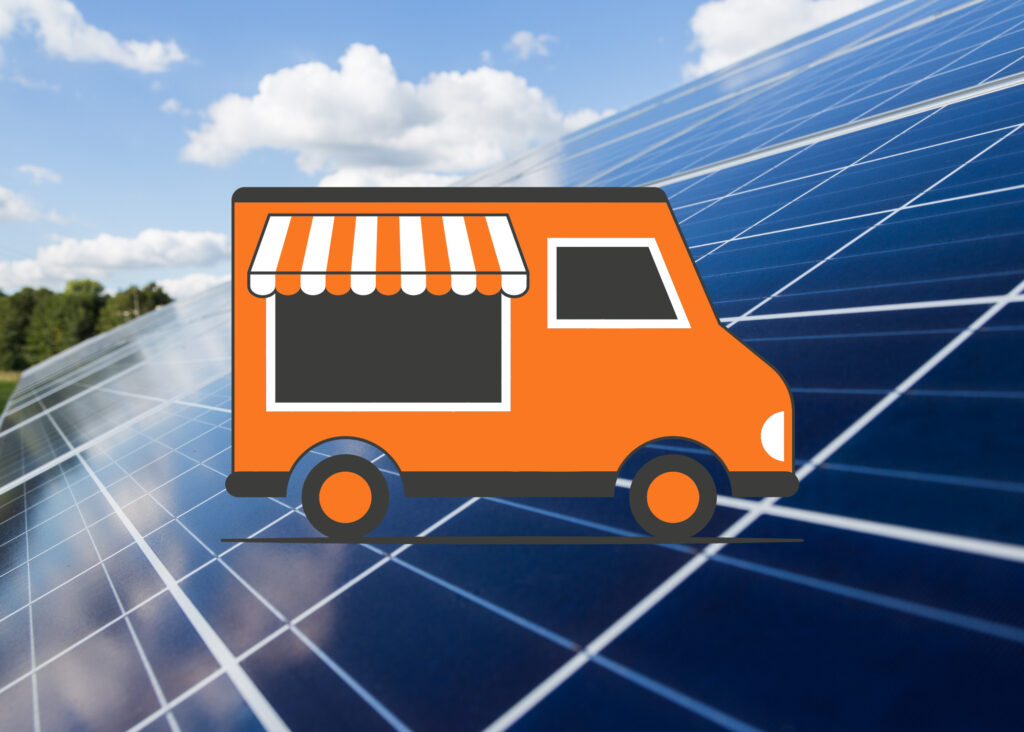 Power Loads
Power Loads
The first step to determining if you can power your food truck with solar panels is to determine your power requirements. Create a list of all your equipment that consumes power. You will first need to determine if a solar panel system can support all your power requirements to operate your truck.
Example:
Fryer – Gas
Griddle – Gas
Burners – Gas
True T-19 HC Fridge: 120V 1.5 amps
Water Heater- Gas
Water Pump – 120V 1 amp
Exhaust Fan – 120V 5.6 amps
Lighting – 120V .5 amp (LED)
Total 120 V amps – 8.1 amps
Next, you will need to multiply your amps and volts to determine the power requirement.
Example:
8.6 amps X 120 volts = 1032 Watts
Next, you can start to design the system around your power requirements. Every remote solar panel setup requires 4 main items:
- Batteries
- Solar Panels
- Solar Charge Controller
- Inverter
Before starting the project, you should correctly size your batteries for the load. Most batteries will provide you with an amp-hour rating. This rating is a gauge on the stored charge of the battery. A 12 volt battery with a 200 amp-hour rating would theoretically provide 10 amps at 12 volts for 20 hours. Since our systems on the food truck are 120V, we will need to convert the power rating through the inverter while accounting for some power losses through the inverter. Assuming an 80% efficiency rating, our 200 amp-hour battery would provide 16 amp-hours at 120V. We already know that all our equipment runs at 8.1 amps, which means that we would only get a little less than two hours of operation off the 200 amp-hour battery.
Example:
We would like to run our food truck for 7 hours off the battery system alone.
Calculate the total watt-hours needed:
1032 watts X 7 hours = 7,224 watt-hours
Convert to amp hours:
7,224 watts / 12 V = 602 amp-hours
Include the efficiency of 80%:
602 amp-hours / 80% = 752.5 amp-hours
Minimum power rating of battery: 752.5 amp hours
From this example, you could probably be ok with two-400 amp hour batteries, however, we would probably recommend at least a 25% safety factor to ensure you don’t run out of charge. Adding a third 400 amp-hour battery would allow you to theoretically run your operation for 11 hours.
Sizing your solar panels:
Now, you will need to size your solar panels. Your solar panel output will vary greatly depending on how many panels you have, what style panel you have, your geographic location, the time of year, your amount of sunlight per day, whether your panels are angled, what the ambient temperature is, along with many other factors. For example, global horizontal irradiance in Indiana from October to March is less than 4 kWh/m^2/Day. It will increase to over 5.75 kWh/m^2/day from May to August. Therefore, it makes sense to install as many solar panels as your food truck can handle while still being within your budget. Solar panels can produce around 15 watts per square foot. That means that if you have a roof that is around 8.5’ wide by 14’ long, you have space for around 1750 watts. Next let’s look at the charge controller.
Solar Charge Controller
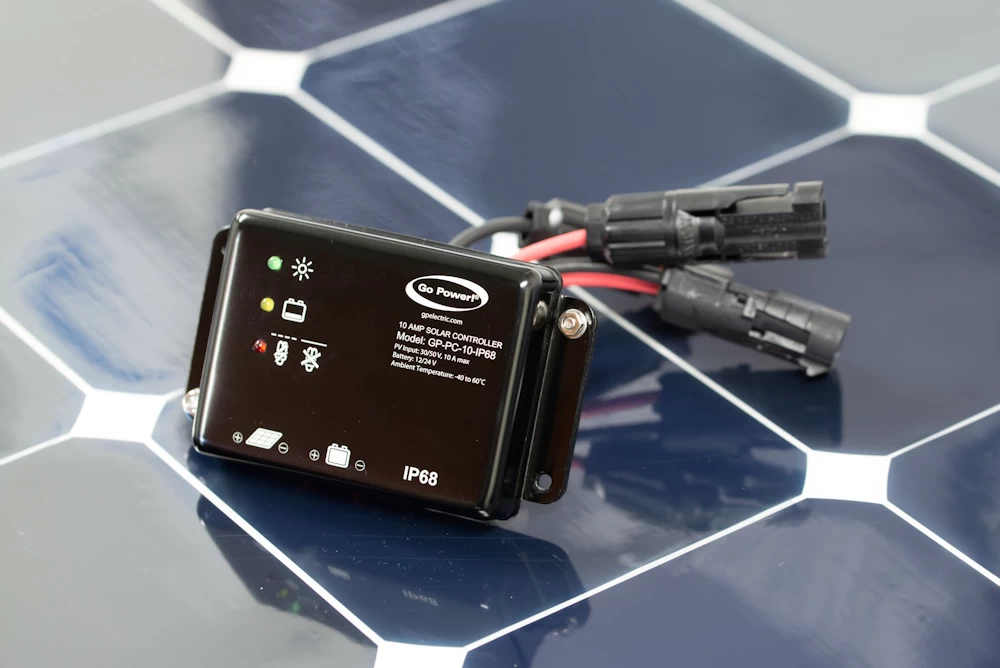 Solar panels typically output around 20V. This voltage needs to be converted to charge your batteries. This is one function of a charge controller. Charge controllers will also monitor your battery voltage and prevent overcharging. Solar charge controllers will generally be rated in amps. Look at the spec sheet for the solar panels you are using and add up the total amperage. Multiply this total amperage by a safety factor of 1.25 to give you a properly sized controller. Also take a look at the batteries you are planning to use. Most charge controllers are compatible with deep cycle batteries, but if you are planning to use Lithium-Ion batteries, make sure your charge controller is spec’d appropriately.
Solar panels typically output around 20V. This voltage needs to be converted to charge your batteries. This is one function of a charge controller. Charge controllers will also monitor your battery voltage and prevent overcharging. Solar charge controllers will generally be rated in amps. Look at the spec sheet for the solar panels you are using and add up the total amperage. Multiply this total amperage by a safety factor of 1.25 to give you a properly sized controller. Also take a look at the batteries you are planning to use. Most charge controllers are compatible with deep cycle batteries, but if you are planning to use Lithium-Ion batteries, make sure your charge controller is spec’d appropriately.
Example:
Our food truck has a roof that is 8.5’ by 14’. We find that we can fit approximately 1600 watts of panels on the roof.
We will use 8 – 200 watt Go Power solar panels rated at a peak output of 9.62 amps each.
9.62 amps x 8 = 76.96 amps X 1.25 safety factor = 96.2 amp charge controller needed.
We would use two Go Power charge controllers rated at 60 amps each.
Inverter
Finally, we can spec out the inverter. We can simply take the estimated power load (in watts) of all our equipment and choose an inverter that can handle this load. Again, it’s a good idea to use a safety factor since some equipment may have a surge when first starting up.
Example:
We know that our power load is 1032 watts.
1032 watts X 1.25 safety factor = 1290 watts
From this example, the recommended size of inverter would be 3000 watt or larger. This will handle the 1032-watt base load. Keep in mind that your startup amperage may be higher for motors such as the exhaust fan. When the fan is first turned on, a large inrush of current could overload the inverter. If this is the case, a soft start kit should be installed to help offset the peak current.
When selecting an inverter for a food truck, it would be a good idea to select an inverter with an integrated battery charger. An integrated battery charger would allow you to charge the batteries using 120V power. When you need to ensure that your truck is charged up every day, you cannot rely on the weather and sunshine. It’s a good idea to make sure you are charged every day by just plugging in your truck every night.
Have a Backup Plan
Finally, while having a solar panel setup on a food truck is theoretically doable, sometimes things can go wrong. It’s a good idea to have a backup plan especially if you are dependent on your truck. Having a generator on hand is a cheap backup plan just in case things go wrong.
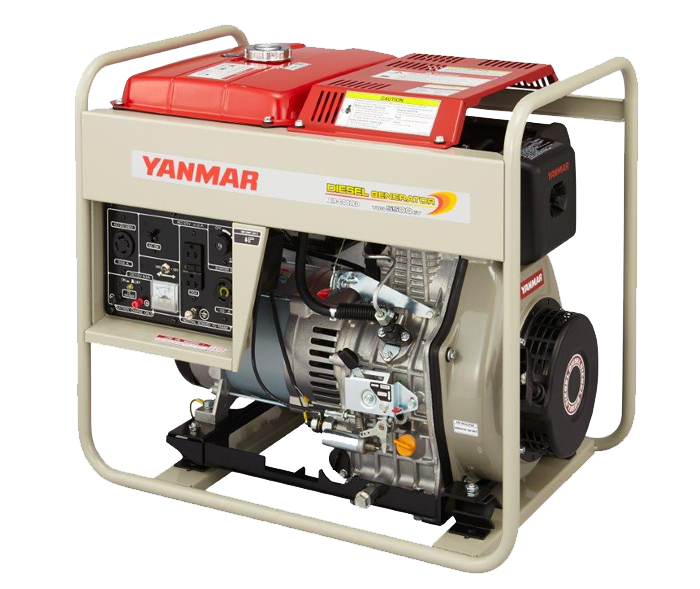
Get In Touch With Crosspoint Today!
Are you interested in learning more about solar panel systems for your food truck or RV? Crosspoint Power and Refrigeration can review your needs and help design a system taking into consideration your equipment and needs. As a Go Power dealer, we can source high quality solar components that are designed to be on the road every day. Call us or email us today and let us start building your custom system.

